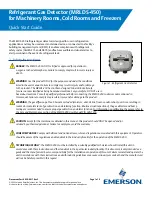
4
33
TEKNETICS
Comprehensive Operating Manual & Guide to Metal Detecting
TEKNETICS
Comprehensive Operating Manual & Guide to Metal Detecting
QUICK START
Start using your T
2
right out of the box
1.
Assemble the detector (see instructions beginning page 5-6).
2
Install four AA alkaline batteries. All positive terminals point up.
3.
Turn the knob, located under the armrest, fully clockwise.
This turns the machine on and sets audio volume to maximum.
4.
When first turned on, the T
2
starts out in the Discrimination mode, with:
Sensitivity preset to 60
Discrimination Level preset to 10
Number of Tones preset to method-1
Sweep the searchcoil from side to side, parallel to the ground. Keep the searchcoil
moving over the ground. If you stop moving the search coil, the sound will also stop.
Probable target type will be indicated at the top of the LCD screen.
5.
If the searchcoil is not in motion and not close to metal, the detector should be silent.
6.
If you experience false signals from electrical interference, from the soil itself, or from lots
of trash metal, press the Menu button.
Sensitivity will be highlighted.
Rotate the Settings knob to the left (counterclockwise),
Reduce the sensitivity setting until the false signals go away.
After 5 seconds, the machine will exit the menu and return to normal operation.
7.
Toss a coin on the ground and sweep back and forth over it a few times to get a feel for
how the machine responds.
8.
You are now ready to search.
9. Pull the trigger switch with your index finger to pinpoint the exact location of
targets, making them easier to unearth.
When the trigger is pulled, PinPoint is engaged ….
The searchcoil need not be in motion to detect an object.
The 2-digit numeric display indicates approximate target depth, in inches.
Detecting Activities (continued)
Hillsides are the best areas for gold prospecting using a metal detector, because hillsides
cannot be cleaned out by panning and dredging the way streams can. Also, gold on hillsides,
not far from its source vein, tends to be larger, and hence more readily detected, than alluvial
(placer) gold which tends to get pounded to pieces and worn away as it rolls along the
streambed with gravel during floods. Gold is valuable because it is a scarce commodity. Even
in a good gold producing area, you will often spend an entire day without finding any gold.
Meanwhile you will dig bits and pieces of other metal— birdshot, shells and bullets from
hunting and target practice, bits of rusted barbed wire, chips off shovels and other mining
tools, rusted tin cans, etc. Hot rocks — rocks containing concentrations of iron oxides that
sound like metal when you pass over them — are also a nuisance in many gold areas.
Discrimination is usually ineffective because the loss of sensitivity resulting from discrimination
is enough to cause those little nuggets to vanish. If you have gone many hours without finding
gold and are wondering if there is something wrong with your metal detector or how you are
using it, the most important clue is this: if you are digging tiny pieces of trash metal, then if
you had swept over gold nuggets, you would have dug them too!
Because most gold nuggets are tiny, and are usually found in soil which is high in iron oxide
minerals, serious gold prospecting requires a detector with high sensitivity and true ground
cancelled motion all metal operation. Run the machine with the sensitivity high enough to
hear some noise from ground minerals, and learn the language of the sounds you hear.
Headphones are recommended unless consideration for safety (for instance rattlesnakes)
rules them out. Move the searchcoil slowly and deliberately, carefully controlling its height
above the ground to minimize noise from iron minerals in the soil. If you hear ground noise,
your Ground Phase setting could be a bit off, so perform the ground cancellation procedure
again. As you walk even a very short distance, ground conditions can change. The ground
geology typically associated with gold will tend to change over very short distances.
The Fe3O4 bar graph indicates the amount of iron mineralization in the soil. In most gold
fields, especially alluvial (placer) deposits, gold tends to be associated with iron minerals,
especially magnetite black sand. If you know this to be the case in the area you’re working,
you can maximize your gold recovery by concentrating your effort on areas where the bar
graph indicates higher amounts of iron mineralization.
Gold prospectors are mostly a friendly bunch, and willing to spend some time showing a
beginner how to increase his odds of finding the yellow stuff. Many will invite you to search on
their claims (if they have any) once they get to know you. In some gold areas, a lot of the
terrain is under claim, so you need to learn how to recognize posted claims and stay off of them
unless you have the claim owner’s permission. Prospecting clubs such as the GPAA often own
claims which are open to their members, and sponsor group outings to good gold areas.
To dig into the ground and pull out a precious piece of yellow metal that you are the first
person on earth to see, can be a thrilling experience. If you love being outdoors, have
patience, and can stay motivated by the prospect of finding that next nugget, then beeping for
gold may be the hobby for you. Not many get rich prospecting, so think of it as outdoor
recreation where your finds might defray the expense while having fun doing it!
TekneticsMANUAL.qx6 4/2/07 11:02 AM Page 4





































